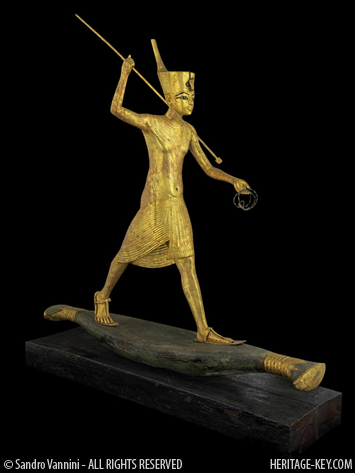 The three day Egypt symposium, last weekend in Toronto, yielded a number of interesting finds. As Heritage Key has reported, researchers unravelled evidence showing that the husband of Djedmaatesankh, a mummy in the Royal Ontario museum, is now located in Chicago.
The three day Egypt symposium, last weekend in Toronto, yielded a number of interesting finds. As Heritage Key has reported, researchers unravelled evidence showing that the husband of Djedmaatesankh, a mummy in the Royal Ontario museum, is now located in Chicago.
Also, a large amount of info was presented on the discovery of an Amarna era fortress at Tell el-Borg. A detailed article on this can be seen here.
Another key piece of research, released at the symposium, is an excavation project at the Seila pyramid.
Professor Kerry Muhlestein, of Brigham Young University, delivered an update last weekend on research going on there. He is Assistant Director of the university’s excavation projects in Egypt.
Background on the Pyramid
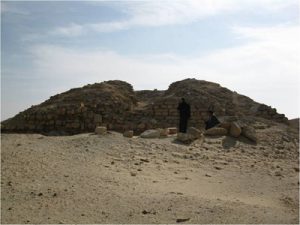 A Brigham Young team excavated the pyramid in the 1980’s and 1990’s. Much of their work has yet to be published. Professor Muhlestein said that they are working on getting all of it into publication as soon as possible. (Note – it is not unusual, in archaeology, for full publication of results to take many years).
A Brigham Young team excavated the pyramid in the 1980’s and 1990’s. Much of their work has yet to be published. Professor Muhlestein said that they are working on getting all of it into publication as soon as possible. (Note – it is not unusual, in archaeology, for full publication of results to take many years).
Muhlestein also told the audience that the university sent a team of engineers out to the Seila Pyramid last year. The engineers, using sophisticated GPS equipment, created a map of the pyramid and and a digital reconstruction. They also analyzed the site’s topography.
The pyramid was built by Snefru, the father of Khufu and first king of the Fourth Dynasty. Snefru built two pyramids at Dashur – the Red and the Bent Pyramid. He also built a pyramid at Meidum (although some think that his predecessor, Huni, started it). Snefru was the first pharaoh to construct “true” pyramids rather than step-pyramids.
The pyramid he built at Seila is located six miles west of the Meidum pyramid. It’s smaller than the other three pyramids and appears rather isolated. It was built on a 52 degree angle, almost identical to that of Meidum, and has a causeway that goes nowhere (there’s no building at the end of it).
Four Interesting Findings
I’m going to break down the key finds mentioned in the presentation:
First find: Seila is a true pyramid. The team has found solid evidence of this.
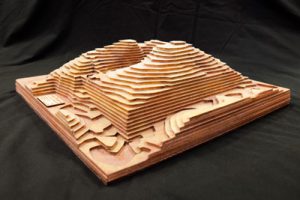 “We actually found smooth placement stones and good evidence this was a true pyramid with smooth casing that we see on Sneferu’s other pyramids,” said Muhlestein.
“We actually found smooth placement stones and good evidence this was a true pyramid with smooth casing that we see on Sneferu’s other pyramids,” said Muhlestein.
The reconstruction reflects this, showing a true pyramid. This discovery means that all four of the pyramids that Snefru built were true pyramids.
The reconstruction wasn’t released to the media but was shown up on the screen. The team did release one great treat. The engineers created a laser-cut model of the pyramid, as it exists today. The accuracy is to within one millimetre. A high-resolution image of this model has been released to Heritage Key and is pictured here.
Second find: It is possible that this pyramid had internal architecture and a burial chamber.
If you take a look at the centre of this model you will see that the middle part of the pyramid is missing. That’s because somebody took it away, looting it, either in antiquity or more recently.
“Presumably somebody was looking for the burial chamber,” Muhlestein said adding that, “we’ll never know if there was a burial chamber there or not.”
So it may have had internal architecture – but researchers cannot say for sure.
Third find: The pyramid has a portico on the east side that appears to have been used for ritualistic purposes.
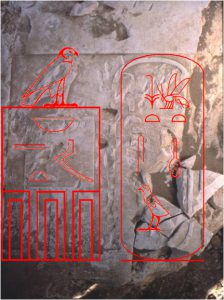
The left side reads “Horus, Lord of Order”
The portico itself is made up of stone and brick pavement. A libation altar and statue were found. There are no walls. This appears to have been an open area. There are holes in the portico that may have been used to hold pots on the ground.
It was “certainly a site of cultic activity,” said Muhlestein.
The team found two stele there – one inscribed and one not inscribed. A picture of the inscribed stele, which was about a metre long, has been released to Heritage Key along with its translation. The inscribed stele bears Snefru’s name and says:
Lord of Upper and Lower Egypt, he who is beautiful.
Professor Muhlestein compared this stele to a stele found at the Bent pyramid:
“Snefru was the first phraraoh to write his name in a cartouche,” he said. “The Bent Pyramid stele, with all the names of the pharaoh written inside the serekh (palace façade) was different than is usually done.”
He went on to suggest that, “This may be evidence of Snefru figuring out how he would write the royal names as he introduces new elements, such as the cartouche. The Seila stele demonstrates the way these two names would be done from then on, setting a standard.”
Muhlestein concludes, “this may indicate that the Seila stele is later than the Bent Pyramid stele, but we can’t know for sure.”
Fourth find: The pyramid is a little larger than we think.
It’s often quoted on the internet that the remains are seven meters high, but this isn’t the case. Muhlestein said, “It’s larger than it appears now because it goes down (into the sand) quite a ways.”
I asked him afterwards if it approaches the size of Snefru’s other pyramids and he said no, this is still a small pyramid. For exact measurements we will have to wait a bit as the team is not yet ready to release them.
Parallels With Snefru’s Other Pyramids
 Now that we have an idea as to what all four of Snefru’s pyramids are like, Muhlestein is able to offer a comparison. He found some interesting parallels between the pyramids. These include:
Now that we have an idea as to what all four of Snefru’s pyramids are like, Muhlestein is able to offer a comparison. He found some interesting parallels between the pyramids. These include:
- Both Seila and Meidum were built at almost the exact same angle. Meidum is 51 degree, Seila is 52. On the other hand both the Bent and the Red Pyramids have an angle of 43 degrees.
- Both Seila and Meidum have causeways that lead nowhere – there is no building at the end of them. The Red and Bent pyramids have causeways that lead to buildings.
- The Bent pyramid and the Red Pyramid have Valley Temples. Meidum and Seila have no evidence of any Valley Temples.
- Meidum and the Red Pyramid have mortuary temples. The Seila and Bent the pyramid do not.
- Statues were found at Seila and the Red Pyramid, none were found at the Red Pyramid and Meidum.
- Meidum has two blank stele, Seila has one blank and one inscribed stele, the Bent Pyramid has two inscribed stele and the Red Pyramid has no stele. “Almost every combination imaginable happens here”, Muhlestein commented, “I wonder if something (is) going on with that.”
- All four pyramids appear to have altars.
What Does This Mean?
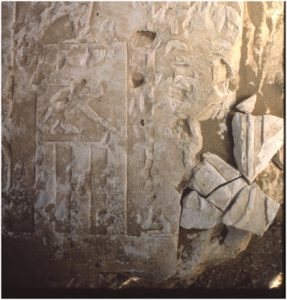
As more information is released researchers should get a better picture of how Seila compares to the other three pyramids.
The team’s plan is to expand on the Seila research, using their engineering techniques to get exact measurements for the Meidum Pyramid, the Red Pyramid and the Bent Pyramid. They are also going to review excavation reports and the literature that has been written about these three pyramids.
Muhlestein concluded that “While two of Snefru’s names mean Lord of Order, it is hard to see what the order is.”
“None of the pyramids have the same decoration scheme, and each has something in common with only one of the others, seemingly setting up individual connections between each pyramid. This suggests that either in the midst of all his innovations, Snefru was introducing things almost willy nilly, or that all of them were designed to work together in some manner. If it is the latter, we have yet to determine how they were designed to function as a whole.”


